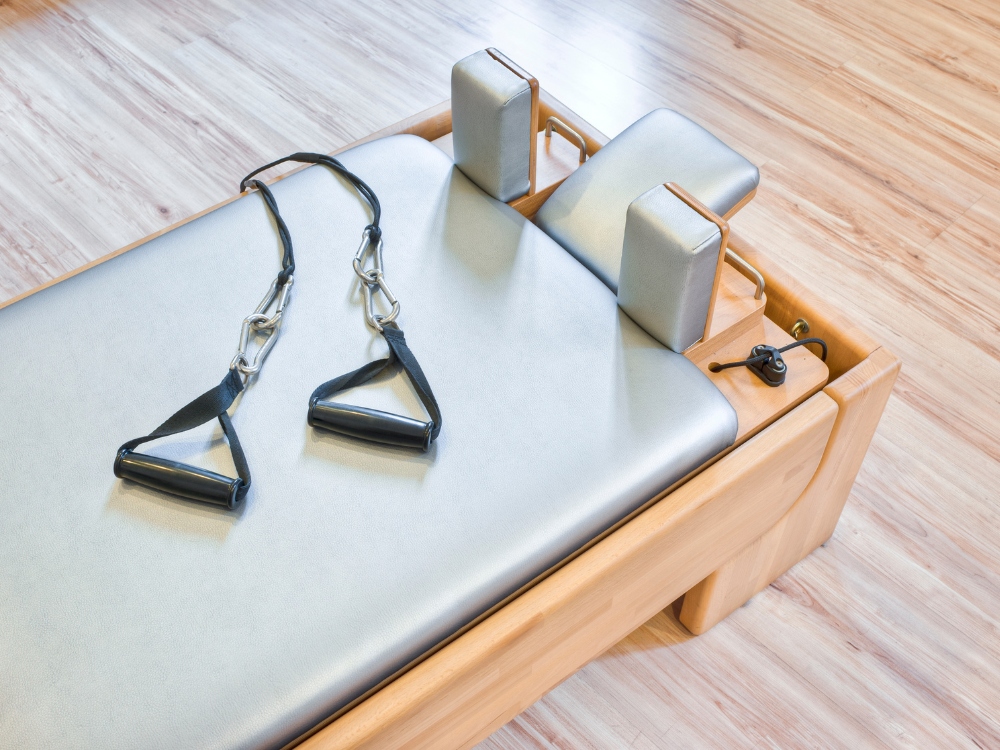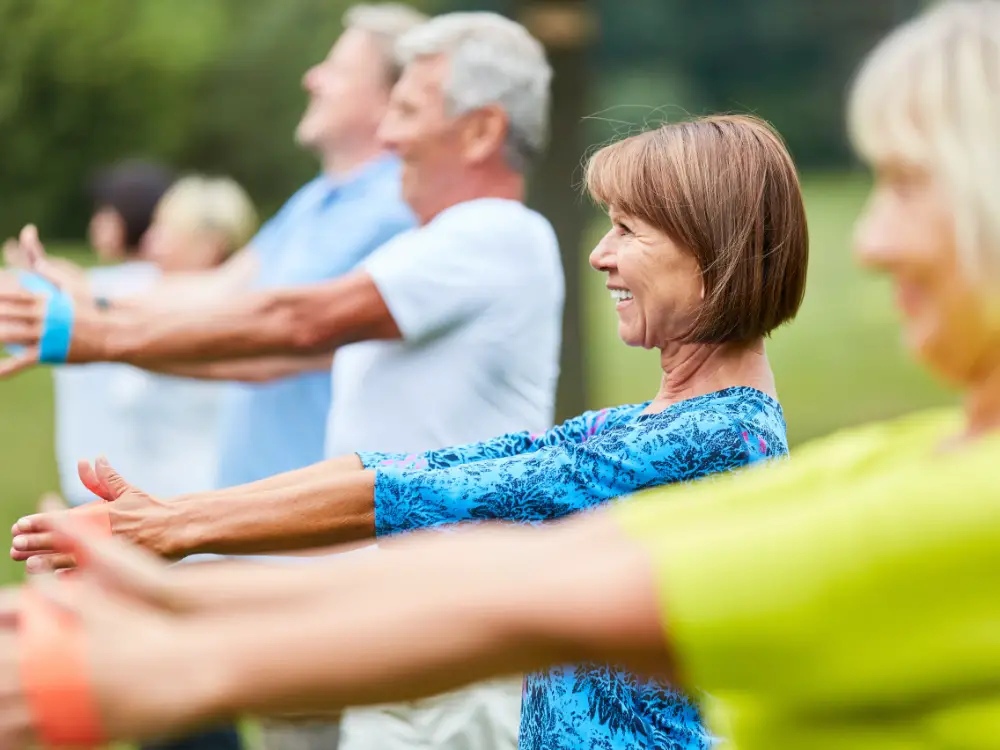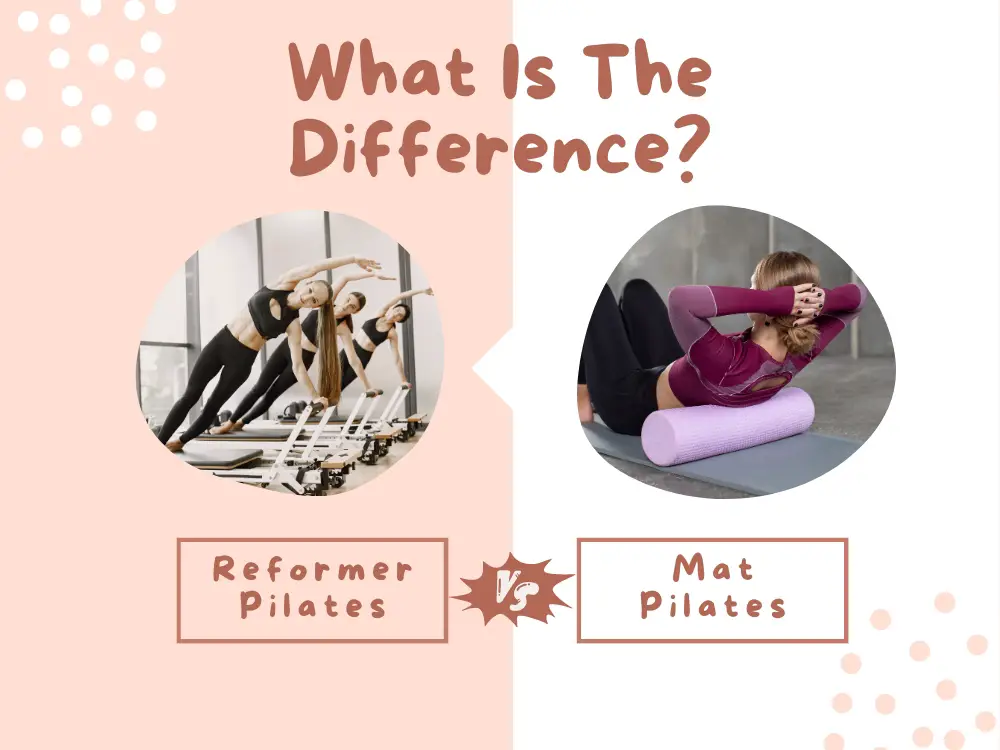Pilates is a popular exercise trend that has been gaining traction in recent years.
People are drawn to the practice for its many physical and mental benefits, but it can be confusing to know which type of pilates class is best for you – Reformer Pilates vs Mat Pilates?
In this article, we’ll explore the key differences between these two forms of pilates so readers can find the right fit for their fitness needs.
Pilates provides practitioners with an invigorating workout that strengthens both body and mind. Practiced on either a mat or a reformer machine, pilates focuses on mindful movement, precise breathing techniques, and core stability exercises designed to challenge your strength and flexibility.
Both Reformer Pilates and Mat Pilates offer unique advantages – let’s take a closer look at what sets them apart!
What Are The Origins Of Reformer And Mat Pilates?
Pilates is a form of exercise that was developed by Joseph Pilates in the early 20th century. It focuses on strengthening and stretching muscles, as well as improving breathing and circulation.
Reformer pilates and mat pilates are both forms of this popular fitness practice. Reformers use specialized equipment to provide resistance, while mat work does not require any additional equipment.
Reformer pilates originated from the traditional exercises taught by Joseph Pilates himself. It uses machines called reformers which have pulleys, straps, springs, bars and other pieces of equipment attached to them for added resistance when performing various movements. The machine provides support while challenging your body at the same time.
Mat pilates doesn’t involve any special apparatus or weights; it relies solely on one’s own body weight to create tension during each movement. This type of workout helps build strength without putting too much strain on joints or tendons.
Mat classes focus more on core stability rather than resistance training like with reformer workouts, but they still offer a full-body workout which can be adapted depending on individual needs and abilities. With no extra equipment needed, mat pilates classes can be easily done at home or even outdoors for those who prefer an outdoor environment for their workouts.
Both types of pilates are beneficial for increasing flexibility and mobility, building muscular strength and endurance, correcting posture problems and helping restore balance between mind and body.
Both practices follow similar principles such as breath control, concentration and precise movements – all aiming towards achieving overall health benefits through physical activity.
Now that you know where these two styles come from let’s move onto what equipment is used in reformer pilates?

What Equipment Is Used In Reformer Pilates?
Reformer Pilates and Mat Pilates have similar origins in the teachings of Joseph Pilates, but they differ greatly in terms of their approach and equipment used.
Reformer Pilates is like a high-precision machine that requires careful adjustments to reap maximum rewards – while mat pilates is more akin to yoga with subtle postural shifts.
When it comes to reformer pilates, the main piece of equipment used is the reformer bed which has an adjustable platform known as the carriage. The pulley system attached to the bed allows for a range of exercises from stretches to cardio all designed to strengthen muscles.
Additionally, there are several other props often used such as foam rollers, jump boards or weighted bars which help increase resistance during workouts.
Here’s a quick list of what you’ll need if you’re looking to take on reformer Pilate classes:
- A Reform Bed
- Foam Rollers
- Jump Boards/Boxes
- Weighted Bars or Straps
The beauty of reformer pilates lies within its adaptability; no two classes will be exactly alike as instructors can adjust springs and tension levels depending on your individual needs. This versatility makes it suitable for almost anyone regardless of age or fitness level so long as they’re willing to commit time and effort into developing themselves further. Moving onto mat pilates now…

What Equipment Is Used In Mat Pilates?
Mat pilates requires little to no equipment and can be done at home or in a studio.
The main pieces of equipment used are a mat, resistance bands, foam roller, stability ball, hand weights, Pilates ring (or Magic Circle), therabands, balance discs and an exercise ball.
A mat is usually the only necessary piece of equipment for completing Mat Pilates exercises.
- Resistance bands provide varying levels of intensity in several movements.
- Foam rollers help develop core strength as well as increase flexibility when stretching by allowing you to target specific muscles.
- Stability balls allow one to add more challenge to their workout while increasing coordination and balance throughout each exercise.
- Hand weights offer additional strength training options for individuals who have mastered the basics of Pilates on the mat.
- A Pilates Ring (or Magic Circle) provides yet another level of difficulty that allows users to perform both cardio-based and muscle toning workouts with its resistance assistance capabilities.
- TheraBands also provide versatility in terms of working out different parts of your body depending on which type is being used.
- Balance disks are beneficial for smaller stabilizing muscles within the core area that may otherwise not get worked during regular Mat Pilates sessions.
- Finally, an exercise ball helps improve posture while providing extra support and stability when performing various Mat Pilates moves.
With this knowledge about what equipment is traditionally used in Mat Pilates classes it’s easy to understand why reformer pilates has become so popular over recent years — it incorporates many traditional Mat Pilates exercises but adds a new dimension with its specialized machine called the Reformer Bed.
This unique apparatus consists of pulleys, straps, springs and bars all connected together creating a variety of pathways for movement with ease making many exercises easier than those performed on a standard mat alone.
With this transition into reformer pilates now complete we can move onto discussing what benefits come along with participating in either form class regularly!

Reformer Pilates vs Mat Pilates: What Are The Main Benefits?
Mat Pilates is a form of exercise that uses bodyweight, gravity, and props to help you strengthen your core muscles.
It’s perfect for people who want to work on their balance and posture without having any special equipment. However, if you’re looking to add more intensity or challenge to your workout, Reformer Pilates might be the best option for you.
Reformer Pilates is similar to regular pilates but with the use of a reformer machine. This adds resistance training into the mix which helps build strength faster in comparison to mat pilates alone. It also allows for different levels of difficulty as well as increasing range of motion due to the adjustable spring settings on the reformer itself.
Additionally, it gives users access to exercises they would not normally be able to do with just a mat such as working against gravity while lying down or sitting up at an angle.
Here are some key benefits of using both Mat and Reformer pilates:
- Increases Flexibility – A combination of stretching and strengthening movements make it easier for individuals to move better throughout daily activities.
- Improves Posture & Balance – Regular practice can lead towards improved coordination and correct alignment over time.
- Enhances Core Strength – Strengthening core muscle groups will help support other parts of the body by providing stability during everyday tasks and workouts alike.
The differences between Reformers vs Mats come down largely from what type of intensity one wants out of their workout routine – so decide based off personal preference!
One thing’s certain; whether used together or separately, these two forms of pilates offer numerous physical health benefits that could potentially take your fitness journey further than ever before!
Now let’s look at who is reformer pilates suitable for?
Who Is Reformer Pilates Suitable For?
Reformer Pilates is like a choreographed dance, with each exercise flowing from one to the next as if you were in an elegant ballet. The main difference between reformer pilates and mat pilates lies in the type of equipment used; reformer pilates involves using a variety of machines such as the Reformer tower combo, which adds resistance and provides users with more support than traditional floor-based exercises.
These pieces of equipment also allow for greater range of motion for those who are looking to increase their flexibility or build strength. With reformer pilates, users can engage in dynamic movements that challenge both their balance and stability while still benefiting from all the classic benefits associated with regular pilates sessions.
Reformer Pilates has become increasingly popular amongst athletes (like cyclists, climbers, figure skaters, etc.), dancers and people recovering from injuries due to its ability to help build strength without putting excess strain on joints or muscles. Those seeking improved coordination and agility may find this style particularly useful as it helps break down complex movement patterns into simpler ones that can be performed safely with proper form. In addition, individuals who want to tone specific areas of their body will benefit greatly by performing targeted exercises on the Reformer machine.
Overall, reformer pilates builds strength through controlled movements rather than relying solely on gravity or additional weights — making it ideal for anyone looking to improve overall fitness levels while minimizing the risk of injury.
As we transition into discussing who mat pilates is suitable for, it’s important to keep in mind how versatile these two styles can be when practiced correctly.

Who Is Mat Pilates Suitable For?
Reformer Pilates is an excellent choice for those looking to improve their strength, flexibility and overall physical fitness. It is also well suited to individuals who are recovering from injury or surgery, as the level of intensity can be adjusted depending on one’s individual needs.
Meanwhile, Mat Pilates offers plenty of benefits too. Firstly, it requires very little equipment and can be performed almost anywhere – making it a great option for those with busy schedules or limited access to reformers. Additionally, due to its low-impact nature, mat pilates can help reduce stress levels and provide relief from chronic pain without putting strain on the joints.
Both forms of Pilates have something unique to offer:
- Reformer Pilates
– Improved muscle tone & joint mobility
– Great for rehabilitation/recovery purposes - Mat Pilates
– Low impact workout suitable for all ages & body types
– Flexible scheduling options & minimal equipment needed
No matter which style you choose, both Reformer and Mat Pilates will give your core muscles a fantastic workout while improving balance and coordination in a safe environment.
With that said, understanding the differences between these two styles of exercise is essential in order to make informed decisions about your personal goals. Let’s take a closer look at what sets them apart in terms of movements used during each session.
Reformer Pilates vs Mat Pilates: Differences In Movement?
Reformer Pilates and Mat Pilates are two different forms of the same exercise. While each one is part of the larger practice of pilates, they involve different movements and muscle groups.
The primary difference between reformer pilates and mat pilates lies in their respective approaches to movement.
Reformer Pilates often involves more dynamic movements than those found in Mat Pilates because of its use of springs and pulleys. For instance, some exercises may include pushing off against resistance to move faster or adding weight to deepen stretches.
In contrast, Mat Pilates emphasizes slow controlled movements where there’s no assistance from an external source like a machine or weights—just your own bodyweight is used instead. It requires deep concentration to ensure proper form throughout each motion so that all parts of the muscles are engaged correctly for maximum benefit.
While both types of Pilates share common goals such as increasing balance and coordination, improving posture, strengthening abdominal muscles, etc., they do differ when it comes to intensity levels due to their distinct approach towards movement execution; this will be discussed further below.
Reformer Pilates vs Mat Pilates: Differences In Intensity?
Reformer Pilates and Mat Pilates can provide different levels of intensity.
The following list provides an overview of differences in intensity between reformer pilates and mat pilates:
- Reformer Pilates usually involves more intense multi-muscle group exercises while Mat Pilates emphasizes isolated movements with little resistance;
- Reformer Pilates may require heavier weights or additional equipment such as bands for added difficulty whereas Mat Pilates generally relies solely on bodyweight;
- Reformer Pilates utilizes springs and straps for improved range of motion during exercises whereas Mat Pilates does not;
- Reformer Pilates classes tend to include more complex movement patterns which require increased physical effort compared to Mat Pilates classes which focus primarily on core conditioning exercises.
As these two forms of exercise offer varying degrees of intensity, individuals should choose one based upon their fitness goals and current level of strength and flexibility.
Frequently Asked Questions
In this part of the article, we’ll provide answers to some of the most commonly asked questions about these two forms of Pilates, helping you make an informed decision about which one is right for you.
Read on to discover the key differences between Reformer Pilates and Mat Pilates!
Are There Any Physical Requirements To Do Reformer Or Mat Pilates?
No, there are no physical requirements to do either reformer or mat Pilates. Both forms of exercise allow people of all ages and abilities to participate in their own pace and intensity.
Reformer Pilates uses a machine with springs and straps that provides additional support while performing the exercises, whereas Mat Pilates is done on the floor without any form of equipment.
How Often Should Someone Practice Reformer Or Mat Pilates?
People often wonder how often they should be practicing pilates to see results. It’s an easy question to answer – in short, the more the better! After all, with the right amount of dedication and commitment, you can become a master of reformer or mat pilates in no time.
So if you want to achieve maximum success from your pilates practice, make sure to set aside enough time for it every week; whether that’s doing a few sessions on the reformer machine or going through some mat exercises at home.
With consistent practice, you’ll soon have those abs looking like Michelangelo himself sculpted them!
What Type Of Clothing Should Be Worn For Reformer Or Mat Pilates?
When it comes to what type of clothing should be worn for reformer or mat pilates, the key is comfort.
You want to wear something that won’t restrict your movement, but also isn’t too baggy either. Ideal outfits include leggings, activewear and a tank top or t-shirt. For men, shorts and a tee shirt are great options as well.
It’s important to avoid wearing jewelry while participating in Pilates because you don’t want anything digging into your skin during the exercises. Lastly, make sure your clothes aren’t too tight so you can move freely throughout each exercise.
Is It Possible To Do Both Reformer And Mat Pilates In The Same Session?
Yes, it is possible to do both reformer and mat pilates in the same session.
It’s like trying to juggle two balls at once; you’ll need to have a good handle on your technique and balance for best results. For those just starting out, it may be better to focus on one type of Pilates exercise rather than combine them together initially.
You can always add more challenging poses or exercises into your routine gradually as you become stronger and more confident in the movements.
Is It Necessary To Have A Teacher Or Can Reformer Or Mat Pilates Be Done At Home?
It is possible to do both reformer and mat pilates at home without the help of a teacher; however, if you are brand new to Pilates it may be best to work with an instructor. This will ensure that you know how to use the equipment safely and properly before trying exercises on your own. Having someone guide you through each move can also help make sure that you’re doing them correctly and getting the most out of the workout.
Conclusion
Reformer and Mat Pilates are both great ways to get in shape, but they’re not the same.
Reformer is more intense and requires greater physical commitment, while Mat Pilates can be tailored for any ability level. No matter which type of Pilates you choose, it’s important to have a teacher or instructional video handy so that you learn proper form.
That way, you’ll get the most out of your practice session and achieve awesome results! So whether you prefer to go hard with Reformer or take it easy with Mat Pilates – find what works best for you and enjoy the journey.


